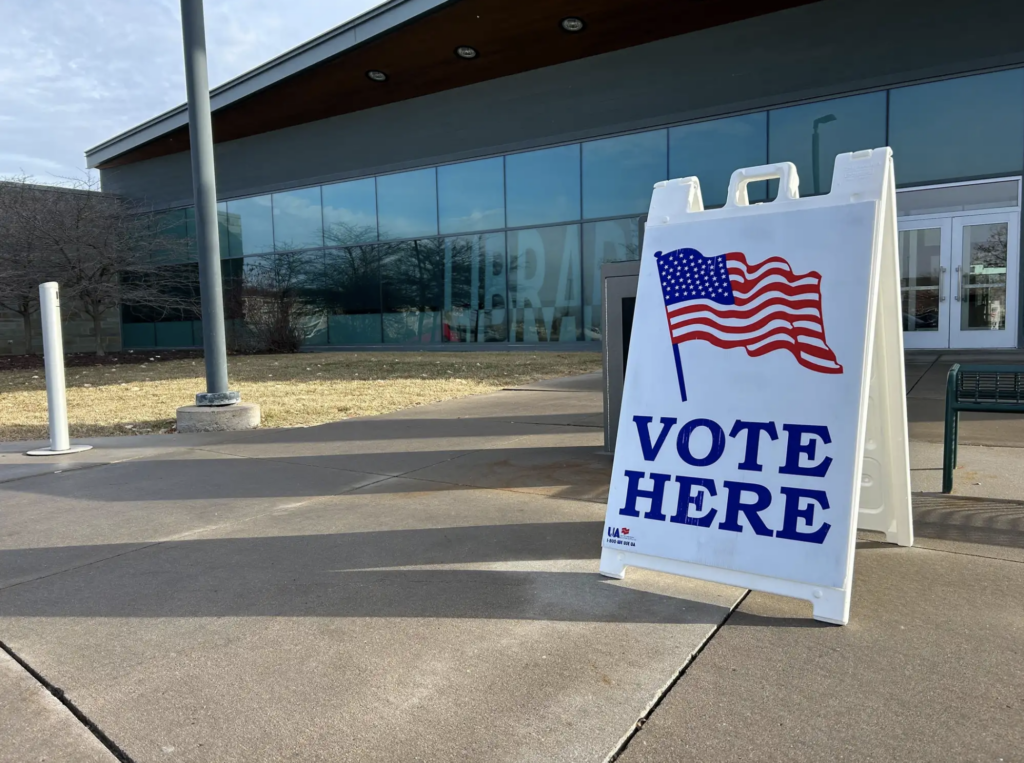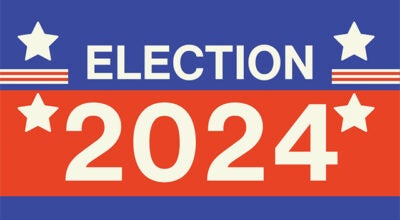Early stats show Minnesotans are in no rush to vote in presidential primary
Published 7:30 pm Wednesday, February 7, 2024

- A sign outside the Forest Lake Service Center in Forest Lake informs voters they can vote early inside. Early voting began in Minnesota on Jan. 19. Clay Masters/MPR News
|
Getting your Trinity Audio player ready...
|
By Clay Masters, Minnesota Public Radio News
Inside the Forest Lake Service Center in northern Washington County, two election workers sat patiently this week for any presidential primary voters to show up to cast early ballots ahead of the March 5 contests.
It’s fair to say they — and many of their peers across Minnesota — have had plenty of downtime. At the Forest Lake location, only 92 early ballots had been cast as of Tuesday morning since the start of voting on Jan. 19.
The first glimpse at early voting statistics statewide suggest the primary isn’t stirring much interest yet.
Figures released by the Secretary of State’s office show that roughly 173,000 absentee and mail ballots were transmitted as of early February; but fewer than 10 percent of those had been sent back and marked accepted.
None of the ballots will be counted until March 5, known as Super Tuesday given the number of states with contests that day.
This is a relatively new way of doing things for voters after many decades of relying on the caucus system for presidential preference votes. Minnesota shifted to a primary in 2020.
“This year is only our second one, so there’s not a lot of historical data to go off of yet,” said Katie Smith, director of Elections and Voter Services for the city of Minneapolis.
There, about 1,300 people have gone through the voting steps, lower than this stage in 2020.
“There’s a lot of different things that do drive turnout,” Smith said. “The big one really is the candidates themselves getting out there and getting their people motivated to vote. And 2020, it was exciting. This was something new.”
Michelle Blue, elections director in Dakota County, said her numbers are down, too. She said she wouldn’t be surprised to see procrastination among voters.
“We have seen some of the candidates that are on the ballot drop out,” Blue said. “So, it’s possible that we do have voters that want to wait until we get a little bit closer and see how it shakes out and who are the candidates who are still expressing interest in running.”
The deadline for people to pull a ballot back and request a new one to account for dropouts arrives at the end of next week.
There are five candidates listed on Republican ballots — including three now out of the race — as well as a space for a write-in. Former President Donald Trump and former U.N. Ambassador Nikki Haley are the two candidates who remain in the running.
Democrats can choose among nine candidates or opt for uncommitted or a write-in. President Joe Biden and Minnesota Rep. Dean Phillips are among the candidates on the DFL ballot.
The Legal Marijuana Now Party is also holding a primary, with five candidates and a write-in option.
Just shy of 750,000 people voted in the 2020 presidential primary, so there’s catchup to do to reach that bar. The Secretary of State’s office intends to update its figures as soon as Thursday and provide regular updates after that.
Polling this year has shown a lot of voter fatigue as Trump moves toward locking in the Republican nomination and Biden in firm control of his party’s nomination race.
In Iowa, the first Republican contest, fewer than 15 percent of registered GOP voters there caucused. Turnout was also underwhelming in the first official contest for Democrats in South Carolina.
Anna Matthews, executive director for the Minnesota Republican Party, said there is still reason for GOP voters to turn out. In Minnesota, she said a candidate has to get more than 60 percent of the vote to get all the national party convention delegates.
“In Iowa, New Hampshire, Trump kind of just barely crossed that 50 percent threshold,” she said. “Well, in Minnesota, that’s not enough to just automatically get all the delegates.”
DFL Party Chair Ken Martin also urged participation.
“Our presidential primary is a powerful tool that helps voters make their voices heard,” he said, adding it “will help us build the organization and start mobilizing the voters that we need to win in November and defend our democracy.”
The parties have a lot to gain. They’ll receive a list of voters who request their party’s ballot.
That’s data they can then use to help get-out-the-vote in the general election. It’s a boon to them given that taxpayers will foot the bill for the primary — somewhere between $12 million and $14 million, according to state officials.




